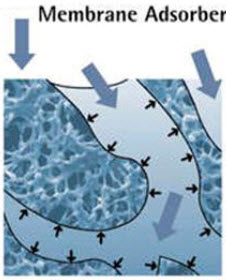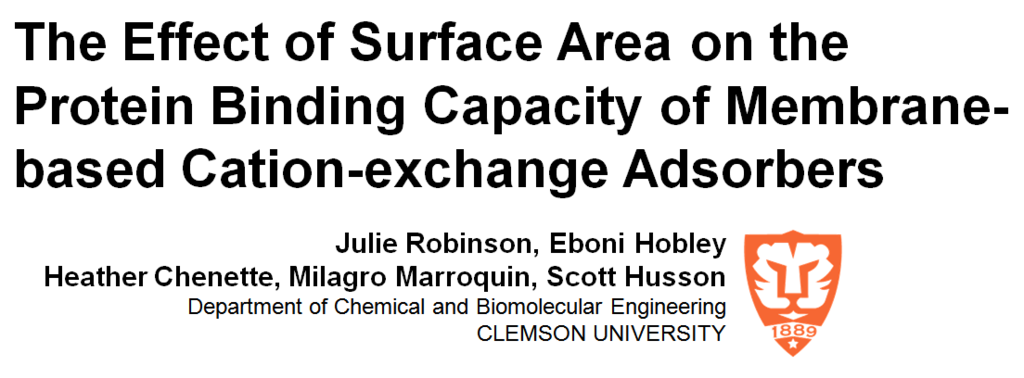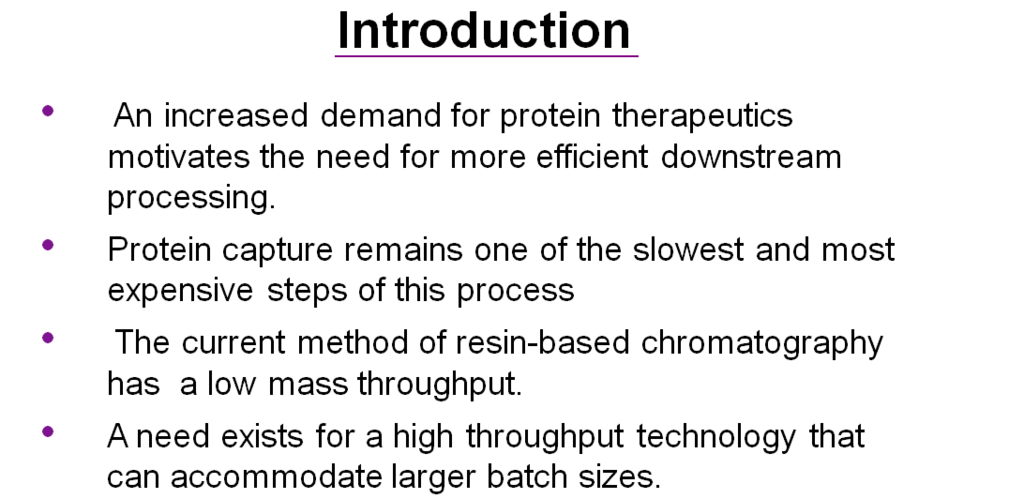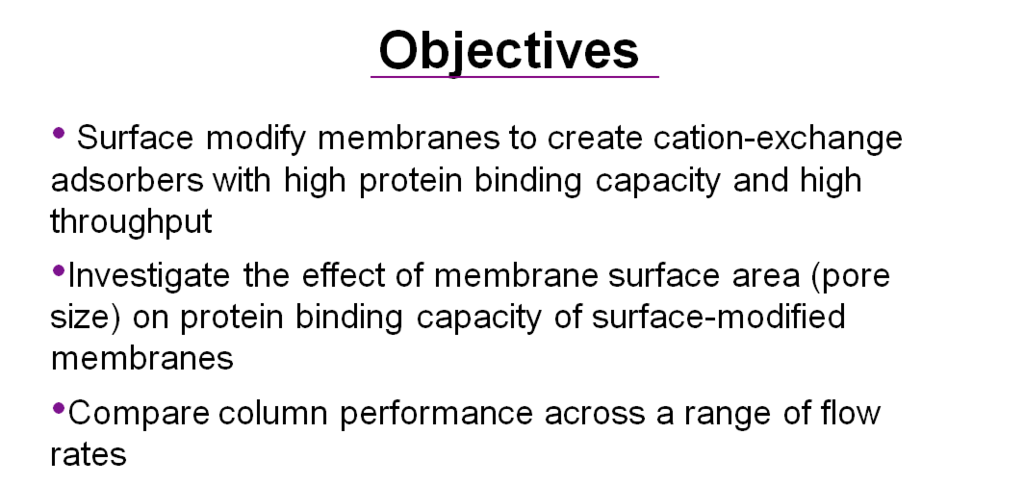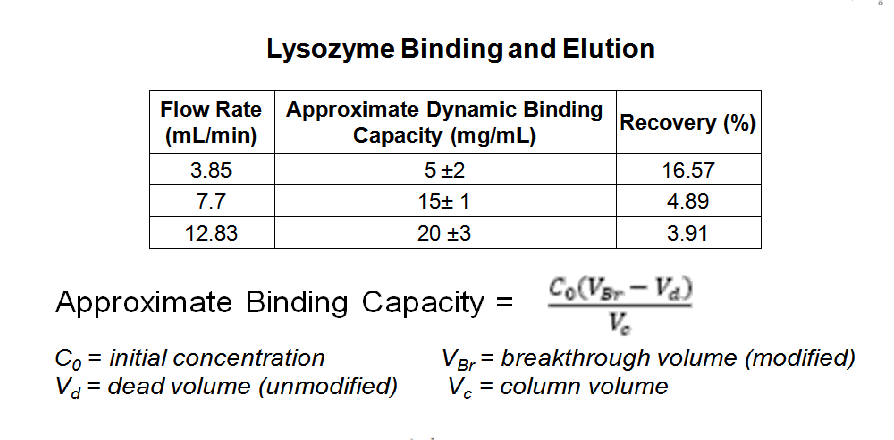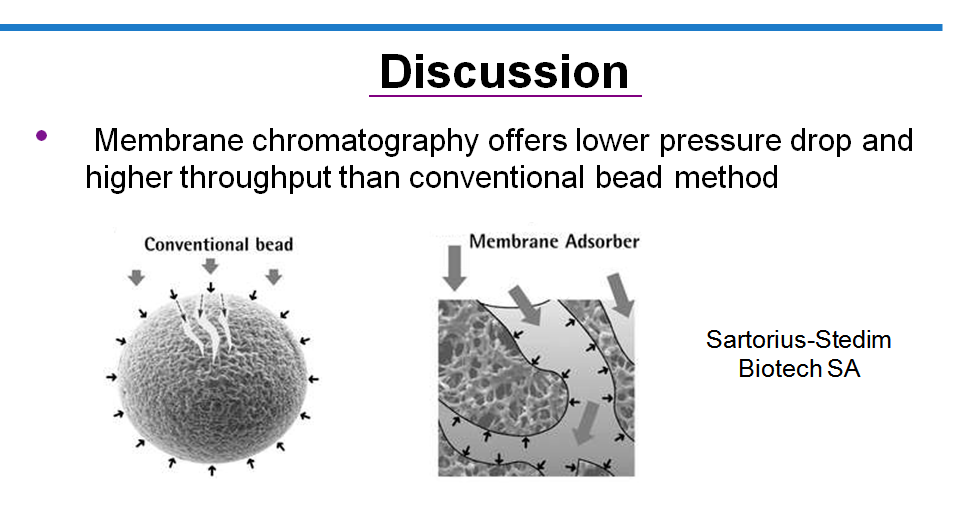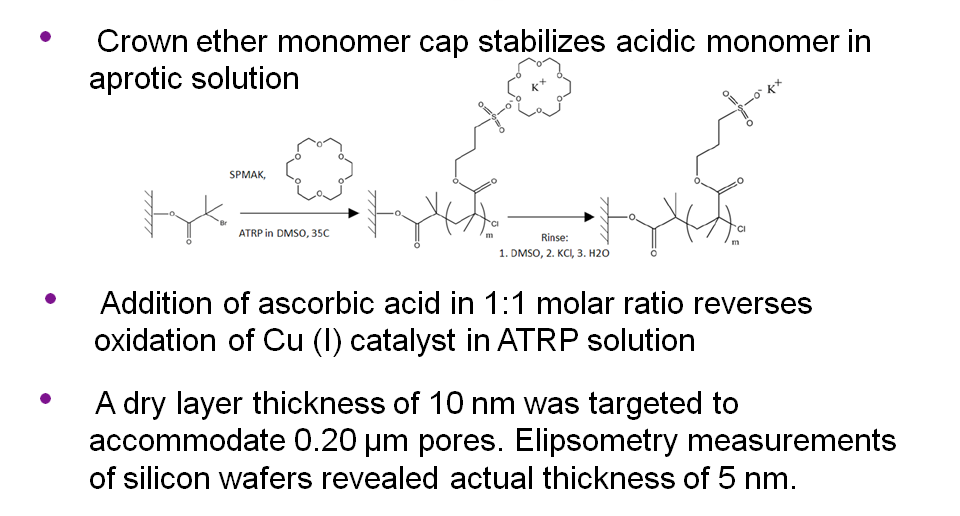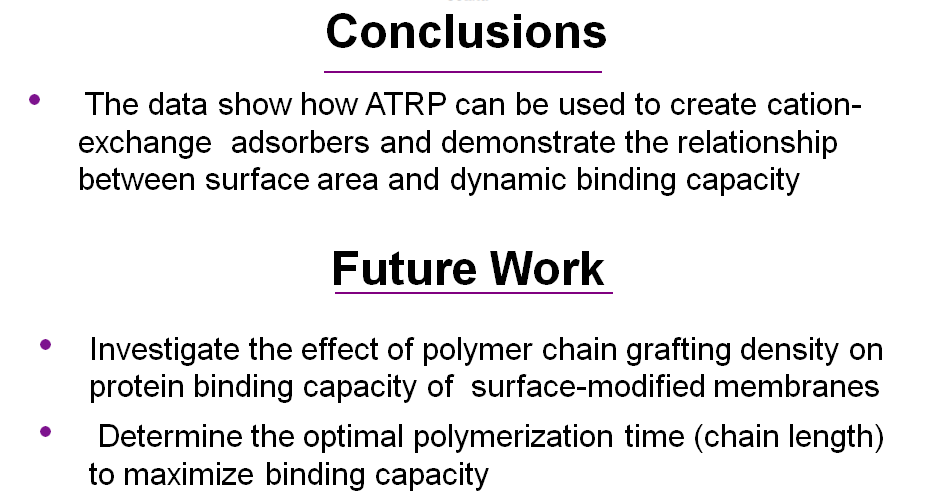Clemson University
Community for the latest research in new membrane materials.
The market demand for protein therapeutics is increasing rapidly. Considering that >60% of the total bioprocess cost is due to product recovery and purification, high productivity / high resolution separation techniques are needed to meet societal demands. Membrane chromatography is one such technique. Despite its success in bioprocess polishing steps, broad implementation of membrane chromatography in bioprocess capture steps has been slow because, until now, membrane adsorbers have had lower per volume protein binding capacities than resin columns.
Our NSF-sponsored work has demonstrated how to build unprecedented adsorptive capacity into commercial base membranes using surface-initiated atom transfer radical polymerization. With this solid foundation, REU students will learn our methodologies to produce high performance membranes and test their performance as protein chromatography stationary phases.
Documents
Surface-initiated Polymerization: A Tool to Develop Highperformance Cation-exchange Membranes
July 22, 2011 10:35am
Effect of Surface Area on the Protein Binding Capacity of Membrane based Cation-exchange Adsorbers
July 22, 2011 10:36am
Hobley Presentation
July 22, 2011 12:39pm
Information
- Advanced Membranes for Protein Chromatography
- Poster Sessions1
- Images8
- Documents3
- Last UpdatedFebruary 23, 2025 8:17am EST
Contacts
-
Julie Robinson

Chemical Engineering
Clemson University
Clemson, South Carolina
-
Eboni Hobley

North Carolina A&T State University
Greensboro, North Carolina
-
Scott Husson
Professor
Clemson University
Clemson, South Carolina

